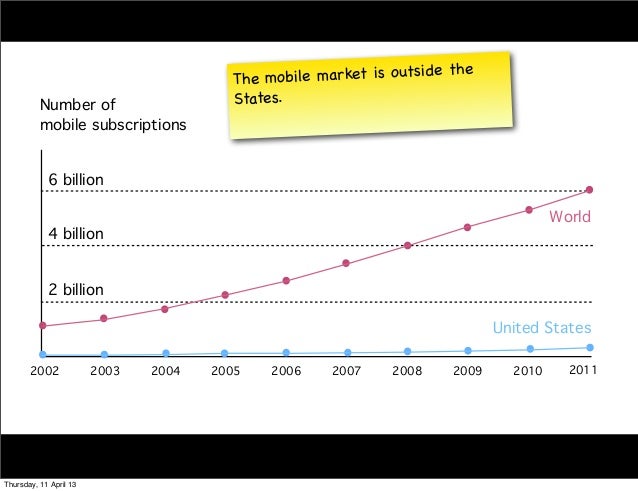Traveling by plane is one of the safest (and fastest) methods of getting from point A to point B, but crowded airports, long waits at security checkpoints and baggage restrictions can make flying a nightmare when you have a disability.
With the help of legislation and strong advocacy, airlines and airports are making it more accessible for travelers with disabilities. We’ve created a fully accessible guide to help you navigate the airports, with tips and tricks to make flying with a disability an easier, more enjoyable process.
Know your rights
The Americans with Disabilities Act (ADA) prohibits “discrimination and ensures equal opportunity for persons with disabilities in employment, state and local government services, public accommodations, commercial facilities and transportation.”
That means that those with disabilities have the right to certain accommodations such as wheelchair assistance, early boarding, interpreters, and/or TTY technology that make it safer to travel. While most airports and U.S. facilities have those accommodations available, you will probably have to ask for them.
Flying outside the United States? People with disabilities are still entitled to certain accommodations, free of charge, under the Air Carrier Access Act (ACAA). It states that all domestic and international flights that have the U.S. as the destination or origination are required to provide those necessary accommodations to people with disabilities to ensure safe travel.
Knowing what you’re entitled to and not being afraid to ask for it will make the entire flight process less stressful.
Planning your trip
Probably the most important part of your trip is the planning stage. Taking the time to map out an itinerary and plan ahead will prepare you for some of the expected complications and ensure that the airline you choose has the accommodations you need ready to go for your trip.
Choose the right airline
Not every airline offers the same accommodations and flight plans. Do your research, contact the airlines you are considering if possible, and make an informed decision on which airline you choose for your flight.
Here are a few things to keep in mind when choosing which airline you use:
- Airline perks. If you are a rewards member of a certain airline, using them might give you perks that make your travel more comfortable.
- Availability of accomodations. While every airline is required to provide a certain standard of accommodations, some airlines go above and beyond with customer service to make sure each and every passenger feels comfortable and safe throughout the trip.
- Airport layout. Find out where airlines are typically located in an airport. You won’t want to have to try and get from one end of an airport to another during a short layover.
- Flight length. Different airlines will have different connecting flight options. If you have a service animal, long flights without any layovers may not be the best fit for you. On the other hand, if overcrowded airports will overstimulate you, longer flights might be better.
Cheapflights.com has a great overview of what accommodations 23 of the major airlines have available for travelers who require extra support.
Talk to your health care providers
Before your trip, schedule an appointment to talk to any relevant health care providers. The more specific and detailed you can be about your trip, the better. Your doctor should be able to walk you through possible complications, health concerns, and any vaccinations you may need before traveling.
You should also get a written statement from your doctor on official letterhead that covers your condition, medications, specific accommodations needed and any other pertinent information. It’s always good to have it on hand in case you need official documentation of your medical condition.
Finally, make sure to get a good phone number that you can reach your doctor at, even if it’s after hours. This is especially important if you’re going abroad somewhere that has a very different medical system than the United States.
Call ahead
The best thing you can do to make sure you have the best flying experience possible is communicate with TSA, your airline, and the hotels or resorts you are staying at.
Most airline accommodations need to be planned ahead of time, especially when it comes to needing specialized equipment or a service animal. Contact your airline as soon as you book tickets to explain what accommodations you’ll need. They’ll be able to give you an idea of what they can provide and what you can expect from their boarding process.
Contact them again 48 hours before you are set to take off to check in and make sure everything is in order. This will eliminate surprises and give the airline a reminder to line up any necessary accommodations that require pre-planning.
TSA tips
The U. S. Transportation Security Administration (TSA) isn’t necessarily the most beloved aspect of flying, but understanding their procedures and planning accordingly can help you breeze through security with minimal hiccups.
TSA Precheck can help make sure going through security is as easy as possible. Those with TSA Precheck memberships have shorter waiting times and aren’t required to remove shoes, laptops, liquids, belts, or light jackets as they go through security. You can apply online and schedule an in-person appointment for a background check and fingerprinting.
The TSA also has a help line available for travelers with disabilities and medical conditions. You can call TSA Cares at 855-787-2227 for additional assistance during the security screening process. According to the TSA website, you should call 72 before traveling “with questions about screening policies, procedures, and what to expect at the security checkpoint.”
Finally, the TSA offers passenger support specialists. If you require special accommodations or have any concerns about going through the security screening process, they can provide a passenger support specialist who can provide on-the-spot assistance as needed.
Pack to your advantage
A lot of times, packing gets put on the backburner when it comes to planning out travel, but it’s an important part of making your flight go as smoothly as possible.
Make sure to pack extra medication. Delays and emergencies happen, and you don’t want to be caught away from home (and your doctor) without essential medications. Experts suggest traveling with two complete packages of your medications, with one in your checked bag and one easily accessible in your carry-on.
Pack medical alert information, and keep it on your person and easy to get to. In the case of an emergency, this information can be a literal life-saver.
Most necessary medical equipment such as your wheelchair, CPAP machine, or diabetes monitoring equipment doesn’t count toward your carry-on items. Make sure you clarify whether any equipment you need falls under this category, and you might be able to bring more on the plane with you than you originally thought. This can help eliminate the need for multiple checked bags, which can make the entire air travel process go much more smoothly.
Make sure to keep important things such as your flight plan, doctor’s note, emergency contacts, and any necessary medical information easily accessible in your carry-on.
Make an itinerary
The more you can plan out your trip in advance, the better off you will be. Whether you use a specialty travel agency or do the planning yourself, creating an itinerary can alleviate a lot of the stress of travel, both during your flight and while you’re at your destination.
Your flight
While careful planning can reduce stress on the day of your flight, there are still a few things to remember to make sure everything goes smoothly.
- Do a final check of your luggage and medical equipment. Make sure you have your doctor’s note, necessary medical and emergency information, medication, flight plans, identification, and anything else you need for your trip.
- Get to the airport early. We suggest getting there at least two hours early for domestic flights, and even earlier for international flights.
- Take advantage of lounge access or credit card perks. If you are a rewards member or cardholder who receives special access to lounges or early boarding, don’t hesitate to use those perks.
- If you are not a TSA Precheck member, make sure that you are wearing easily removable shoes, belts and jackets. Also make sure that you can easily take out any liquids and electronics from your carry-on to go through the X-ray machine. Request help from TSA if you need it.
- Know your rights, and don’t be afraid to stand up for yourself. You deserve a pleasant flying experience, and there are certain accommodations that you are entitled to, especially when it comes to ensuring your medical safety during a flight.
Using travel credit cards to ease the stress of travel
Many travel credit cards offer exclusive perks that you can take advantage of to help alleviate some of the stress of flying. Some issuers sponsor special lounges in major airports that provide a more secluded, calm atmosphere. Most reputable travel cards offer some sort of travel insurance or luggage reimbursement in case of incidents, which can be a financial life-saver if you have expensive medical equipment in your luggage.
Other common perks include:
- Trip cancellation/delay coverage. This is a great perk to have in case of a last-minute medical emergency that causes you to reschedule your trip.
- Priority boarding. Being able to board the plane before everyone piles in can help reduce stress.
- Free checked bags. If you have a lot of medical equipment that needs to be packed, this can come in handy.
- Rewards points. You can use points and miles to upgrade your seats. On long flights, a more comfortable and roomy seat can make an enormous difference.
Service animals
According to the ACAA, airlines are required to allow service animals to fly with their partners in the cabin of the aircraft free of charge. Any equipment required for your service animal is also permitted to be flown in the cargo hold as medical equipment, also free of charge.
If you have a service animal, including emotional support animals, make sure you have the proper documentation from your doctor that qualifies them as such. Also make sure you contact the airline and inform them that you will be traveling with a service animal so they can be prepared on the day of your flight.
While you’re there
Understand the customs of your destination. Depending on where you are going, your reception might be a little different. The U.S. has strict rules and regulations regarding the discrimination of anyone with a disability, but not all countries have those same standards. Planning accordingly can help alleviate some of those issues.
Make sure you have accurate translations of necessary questions, phrases and jargon if you are traveling to a non-English speaking country. Having written translations of your disability or what accommodations you may need abroad could help your destination ensure that you have everything you need for a safe trip.
Know your medical coverage in case of an emergency. This includes understanding physician availability. Locating the nearest hospital to where you’re staying, taking note of local emergency numbers and obtaining any extra insurance you might need while abroad are all easy ways to prepare for the possibility of a medical emergency while you’re away.
If flying is stressful or physically taxing, plan a restful day as the final day of your trip. While it can be tempting to fill your final day with as many fun adventures as possible, it can make the travel back home extremely difficult. Giving yourself a day to relax and rest before you fly home can make a dramatic difference.
Travel tips and special considerations
If you have a physical disability …
- Use your own wheelchair or mobility equipment, and check it at the gate. While airlines will provide you with one, using your own equipment can eliminate wasted time and stress from switching from yours to theirs and vice versa.
- Bring spare parts. If it could break, assume that it will and prepare accordingly.
- If your wheelchair needs wet cell batteries or anything that typically isn’t allowed on airplanes, make sure to call ahead and talk with TSA about your equipment needs.
- Find the right luggage. You want luggage that is easy to handle, protects your medical equipment and is easy to find.
If you have a visual impairment …
- Research the airport layout before your trip. If you have a general idea of where certain things are within the airport, it’ll be easier for you to maneuver on the day of your flight.
- Carry a cane, even if you don’t necessary need it for navigational purposes. It will come in handy if you do end up needing it while navigating a crowded airport that you’ve never been in, but it will also help TSA and other travelers understand that you are visually impaired.
- Choose luggage that is easy to identify. Whether it’s a brightly colored or patterned suitcase or specific luggage tag, making your luggage distinct from those around it can help you and those around you find it. You can also use tools such as a remote luggage locator to help you find your bag with an audible sound.
- Download helpful mobile apps for your trip. Audible GPS apps, currency readers, and other apps can make traveling much easier.
If you are deaf or hard of hearing …
- Set up text alerts on your phone. Most airlines utilize the overhead speakers in an airport for last-minute updates and changes. Ensuring you’re set up with text alerts and turning your phone to vibrate mode can help make sure you are getting all of the necessary updates about your flight.
- Pack extra batteries and a spare hearing aid.
- Request an interpreter if you need to, especially when discussing medical jargon or your medical condition to TSA.
- Pre-printed copies of common phrases and requests can help you effectively communicate certain things with TSA members, your airline personnel, and/or other travelers.
- Carry a notepad and a pen. While it’s not always the most ideal method of communication, having a notepad and pen ready for short interactions can help alleviate some stress, especially in distracting environments.
If you have a neurological impairment …
- Request a handicapped-accessible room. This makes it easier for first responders to reach you in case of an emergency.
- Talk to your doctor about medications that can help you cope with a long flight or other common travel situations, including exacerbation. According to the National MS Society, certain corticosteroid medications can help treat severe exacerbations, and having a prescription ready to go can help alleviate issues if a doctor or pharmacy isn’t available on your trip.
- Make sure to give yourself adequate rest during your trip.
- If you take daily medication at a certain time, make sure you have a watch or other device that stays synced to your home time zone schedule so that you can stay on track while you’re traveling.
If you have a developmental disorder such as autism …
- Pack weighted blankets on your carry-on in case you need them to help cope with overstimulation.
- Download your favorite calming music to play while you’re on the plane waiting for your flight at the airport.
- For longer flights, bring a tablet that has a visually stimulating activity downloaded to help keep you calm and engaged. Also make sure you have precharged, USB chargers so that your devices don’t die midflight.
- If you are sensitive to noise and/or light, bring noise-canceling headphones and a sleeping mask to help block them out.
Having a disability shouldn’t limit your travel options to staycations and locations within driving distance. Planning, doing your research, and knowing your rights can help you have the best air travel experience possible.
Accessibility notice
Our “Fully accessible guide to flying” was written and designed to meet the needs of our readers with disabilities. This content was created for complete interpretation by all readers, including those who utilize voice assist and other assistive technologies.
This guide was published in accordance with the Web Content Accessibility Guidelines 2.0, which can be found at https://www.w3.org/TR/2008/REC-WCAG20-20081211/, and meets Level A conformance guidelines.
Back to Traveljunkies
Original article – By Madison Blancaflor | Published: May 31, 2018



 Follow
Follow









![How a Podcast Is Born [Infographic] How a Podcast Is Born [Infographic]](http://netdna.copyblogger.com/images/650/copyblogger-how-a-podcast-is-born-infographic.png)